Learn How to Easily Grow Using Hydroponic Gardening
Growing plants, fruits and vegetables hydroponically can be rewarding and prolific.
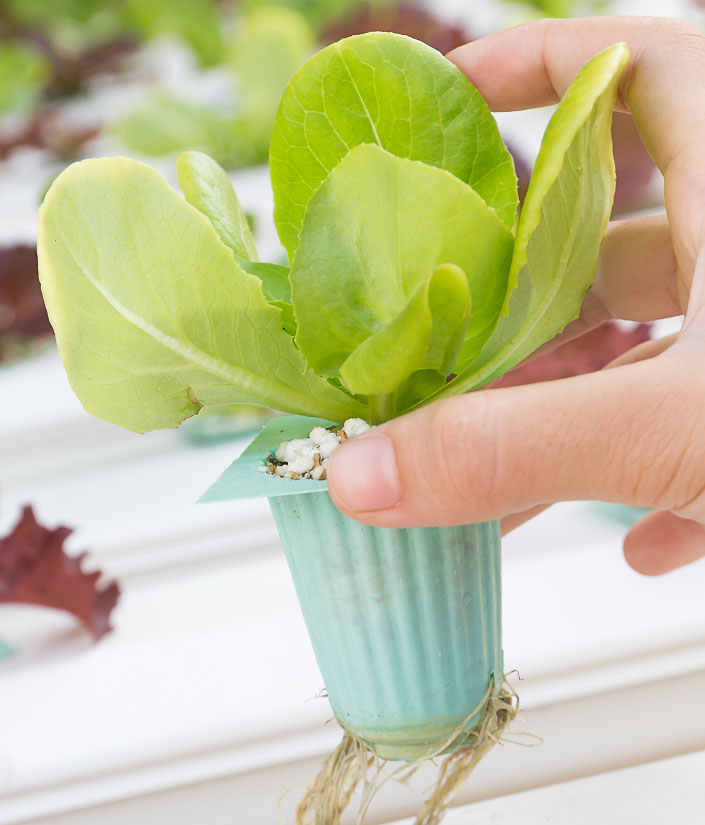
Why Grow with Hydroponics
Hydroponic gardening can be fun and very rewarding. Like any endeavor, you do need to learn a few things to ensure you have a better success rate, but that is why we built this site! If you want to grow indoors, we have you covered. If you want to grow in a greenhouse, we have that covered too! Hey, if all you have is a few seeds and a couple of mason jars, we can even show you how to grow a nice salad garden. So dive in and learn why we think this is the best gardening method.
Our Mission
When we first started learning about hydroponics, we could not stop. But to find everything we needed in one place was simply not available. So we set out to help the beginner learn and find the resources they needed to experience the joy we found. Our mission is to provide an easy way to get into hydroponic gardening. Even if it is just to grow a few herbs in your kitchen!
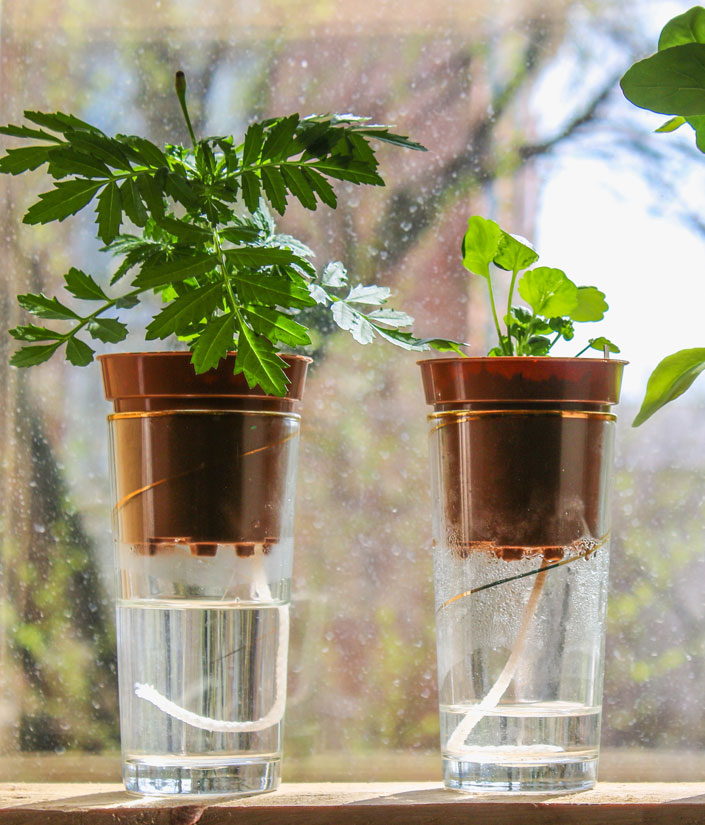
Grow Methods
DIY Projects
Hours of Light
Days to Grow
6 Types of Hydroponic Systems
There are a variety of methods used in hydroponic gardening. We identify and discuss the 6 most used systems, which you can adapt to any size garden. From your kitchen, to your greenhouse, to a large facility, these systems are tried and tested.
Which system is right for you? That is a personal choice but understanding each system with the pros and cons can help you make a educated decision. Learn all about different systems here.
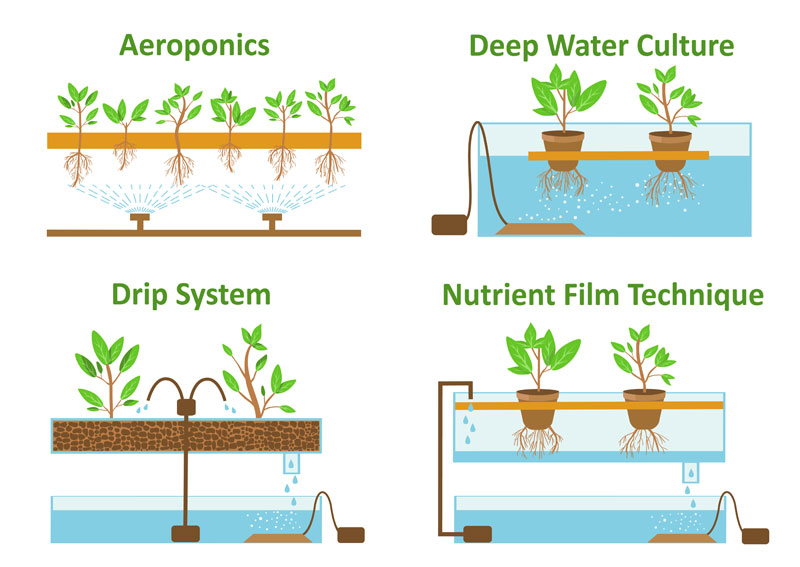
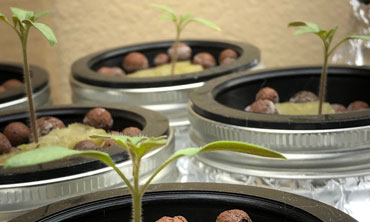
The Kratky Method
The Kratky Method of Hydroponics is one of the simplest methods. Based on Dr. Kratky’s method of closed container gardening, learn how to grow in just water, with or without aeration. Have you heard about folks growing in mason jars? This is likely the method! This is a simple method and fun for kids.
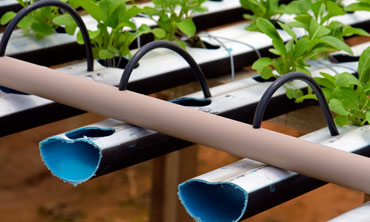
N.F.T. (Nutrient Film Technique)
A N.F.T. system delivers a steady flow of nutrient solution. No timer or submersible pump is needed. The nutrient solution is normally pumped into the growing tray using a tube. This allows the solution to flow over the roots and then drain back into the reservoir.
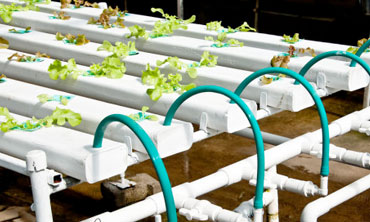
Ebb and Flow System
Using a submerged pump, which is typically connected to a timer, the Ebb and Flow Hydroponic System floods the grow trays with nutrient solution. After a set time, the solution would be drained back into the reservoir. This is used more in commercial setups.
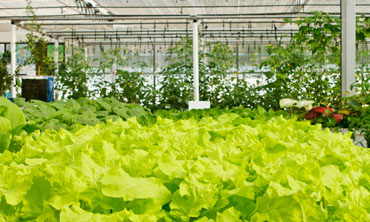
Aeroponic
One of the most difficult types of hydroponic gardening due to the nature of the system. Like the N.F.T. system, the growing medium is basically the air itself. The roots hang in the air and are misted with nutrient solution typically every few minutes. The roots will dry out rapidly if the misting cycles are interrupted.

Drip System
One of the most widely used type of hydroponic systems world wide. A timer controls a submersed pump and the nutrient solution is dripped onto the base of each plant using a small drip line. What happened to the water after that can be done in a couple of ways and is dubbed Recovery or Non-recovery.
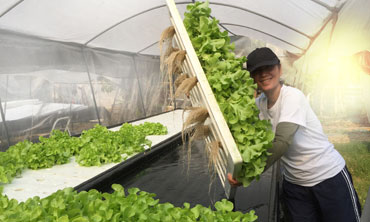
Floating Systems
The simplest of all hydroponic systems. Styrofoam (or other medium) floats hold the plants directly on the nutrient solution. An air pump supplies air to the air stone that bubbles the nutrient solution and supplies oxygen to the roots of the plants. Water culture is the system of choice for growing leaf lettuce.
Hydroponic Gardening Plants
Vegetables are one of the most popular plant types to grow with hydroponic gardening techniques. Tomatoes, potatoes, melons, squash, cucumbers and so much more can be grown hydroponically. Just about every variety of vegetable can grow with hydroponics.
Your content goes here. Edit or remove this text inline or in the module Content settings. You can also style every aspect of this content in the module Design settings and even apply custom CSS to this text in the module Advanced settings.
Your content goes here. Edit or remove this text inline or in the module Content settings. You can also style every aspect of this content in the module Design settings and even apply custom CSS to this text in the module Advanced settings.
Latest Hydroponic Gardening News
Hydroponic Gardening for Beginners: Everything You Need to Get Started
What Is Hydroponic Gardening? Hydroponics Made Simple Hydroponic Gardening is a modern method of growing plants without soil, using a nutrient-rich water solution to deliver everything plants need directly to their roots. Instead of pulling nutrients from dirt, plants...

How To Trim Tomato Plants For Max Bloom
If you are a gardener and you like growing fruits and veggies you might want to begin growing tomatoes. The thing about tomatoes is learning the right way when trimming tomato plants. As surprising as this may sound, there is a little bit more to it then just snipping...
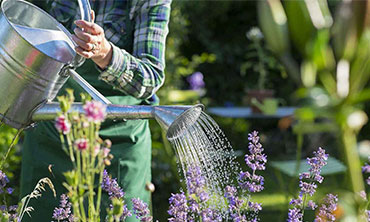
Jul 3 Secret Confessions of a Landscape Professional
Lorem Ipsum has been the industry’s standard dummy text ever since the 1500s, when an unknown printer.Lorem Ipsum is simply dummy text oftypesetting industry. Lorem…
